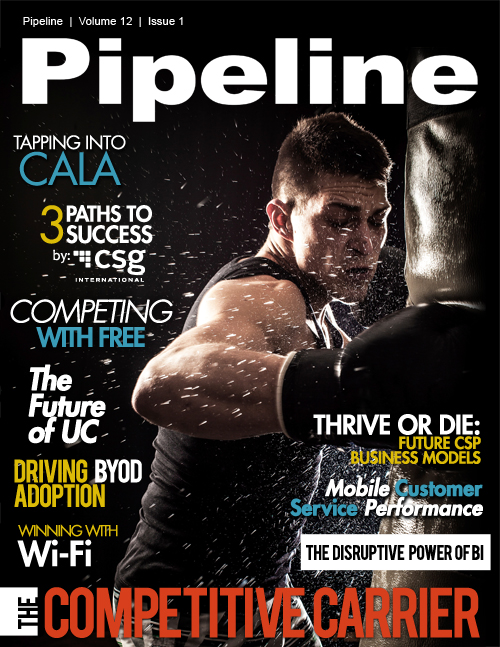Competing with Free: Learning from Silicon Valley
Right now, the cable Wi-Fi alliance is in a race to get as many users as possible on its shared public Wi-Fi network.
The list here is long, but some representative examples include Deutsche Telekom’s partnership with Spotify, Telefónica’s OTT partnership with Evernote, and Facebook’s Internet.org initiative,
which aims to zero-rate basic services in order to accelerate the uptake of mobile in the developing world. Airtel is an early adopter of Facebook’s initiative, and now offers 13 no-data-impact
apps to its user base in Zambia. Enterprise customers are seeking greater symmetry in global service pricing, with a goal of flattening and consolidating these costs. They are also looking
for the flexibility to spin up and rapidly scale (up or down) new services in new regions.
Perhaps no mobile operator knows more about the value of free than T-Mobile. The company has captured nearly all of the post-paid growth in the U.S. market over the past year, and it's
accomplishing this, in large part, due to freebies. For instance, streaming music, a popular service that can quickly devour a data package, doesn’t count against mobile data plans on
T-Mobile. The Un-Carrier also offers free in-air text messaging and free international texting and mobile data, which is relatively unheard of.
Expanding the network: Metcalfe's Law
One problem that CSPs face in the cloud era is that the traditional methods for evaluating success in technology businesses aren't the only metrics that matter. In fact, the number of users of a service determines long-term value, even more than the revenue. This is the secret behind silicon valley upstarts like Facebook, Uber, and others. It's called Metcalfe's Law and it can be used to project the value of a network based on the exponential size of the connections it can facilitate.
What does Metcalfe have to do with service providers? Quite a bit, actually, and some of them, particularly MSOs, are getting it. Right now, the cable Wi-Fi alliance is in a race to get as many
users as possible on its shared public Wi-Fi network. Why? Because ever user essentially increases the value of the network itself. At this time, however, this network is not monetized--it is
used for two things: churn reduction and future strategy. MSOs give away public connectivity in exchange for a larger network. And as we know from Metcalfe, the larger a network, the more
valuable it becomes.
Exciting times ahead
Telephony may be in terminal decline, as most analysts agree. Voice and video will, however, remain a central part of human communication. These are very exciting times in telecoms for those
who understand that “digital” is not a channel, but a new set of business models. And many of these models are much less costly, with service offerings that can be offered at no cost to the end
user. Companies that use these new business models will use voice communication asymmetrically transferring profits from legacy telephony to their non-telecom business. Competing with free
requires a new set of tools and a new set of expectations, but sooner than not, free will become the new normal.



















